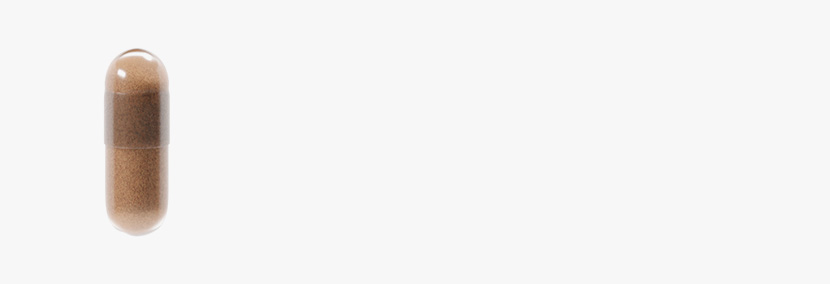Lumigan
Lumigan Dosage and Frequency
Sep 1, 2025
Elevated intraocular pressure (IOP) happens when the eye produces more aqueous humor than it can effectively drain. Over time, this imbalance puts stress on the optic nerve, which can lead to glaucoma and irreversible vision loss if left untreated. Research continues to highlight how changes in the trabecular meshwork and increased resistance in fluid outflow are central to this process.
One of the most widely prescribed treatments is Lumigan (bimatoprost ophthalmic solution), a prostaglandin analog that helps restore balance by improving fluid outflow. Taken just once a day, usually in the evening, Lumigan is trusted for managing ocular hypertension and open-angle glaucoma. The nighttime schedule isn’t about reducing systemic absorption, which is already minimal when drops are used correctly, but rather about maximizing IOP control over the full 24-hour cycle and reflecting how the drug was studied in clinical trials.
In this article, we’ll explore the recommended Lumigan dosage, the best frequency of use, and the key considerations that support both safety and long-term effectiveness.
Key Takeaways
- Lumigan (bimatoprost) is prescribed at a dosage of one drop once daily, usually in the evening.
- Evening use is recommended because clinical trials were designed around this schedule, and the peak effect (8–12 hours later) aligns with typical morning IOP checks.
- Systemic absorption is minimal with proper technique; the main advantage of nighttime dosing is improved IOP control during high-risk periods and better tolerability.
- Using Lumigan more than once a day does not enhance efficacy and may actually reduce pressure-lowering effects while increasing side effects.
- Consistency matters — skipping doses or doubling up can compromise long-term pressure control.
- Proper instillation technique, hygiene, and adherence to a bedtime routine support both safety and effectiveness.
- Common side effects like redness or irritation often improve with time, but should be discussed with a provider if persistent.
About: Trusted by over 2,000+ global clients since 2014, Maylips has become a leading supplier of cosmetic, skincare, and orthopedic products for medical and aesthetic professionals. Maylips offers a wide range of authentic brand-name products at competitive wholesale prices, sourced from around the world. If you’re looking to buy Lumigan online, contact our sales team for guidance.
Pharmacokinetics and Onset of Action for Lumigan
Lumigan (bimatoprost) is absorbed quickly after being placed in the eye. Within about 10 minutes, measurable levels appear in the aqueous humor, the fluid that maintains eye pressure. Its pressure-lowering effect, however, develops more gradually, reaching a peak reduction 8 to 12 hours after dosing. This timing is one of the main reasons providers recommend using Lumigan in the evening. Doing so ensures its strongest effect overlaps with morning IOP checks, which are commonly used to evaluate treatment effectiveness.
This strategy also helps answer the question of many patients who are curious as to why Lumigan is taken at night. The short answer is that it aligns best with both clinical practice and the body’s natural IOP fluctuations, providing consistent control when it matters most.
Systemic absorption is minimal when drops are used correctly. Once absorbed, Lumigan is metabolized primarily in the liver and eliminated through both the urine (about 67%) and feces (about 25%), without significant buildup in the body. Understanding these pharmacokinetic and pharmacodynamic details helps explain why once-daily dosing is sufficient and why consistent timing matters for long-term results.
Approved Dosage and Frequency of Lumigan
The FDA-approved dosage for Lumigan is one drop once daily in the affected eye(s). Evening use is recommended, not because it reduces systemic absorption, but because:


- Clinical trials that established Lumigan’s effectiveness were designed around evening dosing.
- The peak effect (8–12 hours after use) aligns with routine morning pressure checks, giving doctors a reliable picture of how well treatment is working.
- Some patients report less awareness of redness when the drop is used before sleep.
Key Dosage Details
- Concentration: The 0.01% formulation is most widely prescribed, balancing strong IOP reduction with fewer side effects compared to older 0.03% versions.
- Timing: Evening use provides consistent overnight pressure control and reliable daytime monitoring.
- Duration: Benefits last at least 24 hours; stopping Lumigan gradually reverses its effect, leading to rising IOP.
- Switching Concentrations: Any change in formulation should be managed by an eye care provider to avoid destabilizing pressure control.
Patients should be reminded that missing doses or taking more than prescribed can undermine treatment effectiveness. Consistency is central to protecting vision.
Why Multiple Daily Doses of Lumigan Are Not Recommended
It may seem logical that using Lumigan more often could lower eye pressure further, but clinical research shows the opposite. Applying the drops more than once a day does not enhance IOP reduction and may actually reduce effectiveness. This is because the prostaglandin receptors in the eye become saturated after a single dose, and adding more does not provide extra benefit.
Potential Risks of Multiple Daily Doses
- Reduced Efficacy: Receptor saturation can blunt the drug’s effect and create less predictable pressure control.
- More Side Effects: Extra doses increase the likelihood of redness, irritation, or burning without improving results.
- Lower Adherence: Complex dosing schedules are harder to follow, increasing the risk of missed applications.
For these reasons, the once-daily regimen is considered both safer and more effective. Patients should always consult their ophthalmologist before making any adjustments.
Patient Counseling Tips on Lumigan Instillation and Adherence
The way Lumigan is applied makes a big difference in both safety and results. Effective patient counseling can reduce errors, support adherence, and improve outcomes.


Practical Counseling Tips
- Hand Hygiene: Wash thoroughly before applying drops to avoid introducing bacteria.
- Correct Technique: Tilt the head back, gently pull down the lower eyelid, and place one drop into the conjunctival sac.
- Avoid Contamination: Do not let the dropper tip touch the eye, lashes, or any surface.
- Timing: Use Lumigan at night unless instructed otherwise, as evening dosing remains the most effective and well-studied schedule.
- Missed Dose: If forgotten, apply the next scheduled dose without doubling.
- Contact Lenses: Remove before instillation and wait at least 15 minutes before reinserting.
- Consistency: Apply at the same time every night to reinforce habit and maintain stable IOP.
Counseling should also address expectations around side effects. Eye redness or mild irritation often improves over time, though in some cases it persists and requires a switch to another therapy. Eyelash growth usually reverses after discontinuation, while pigment changes may be longer-lasting. Reassuring patients about which effects are temporary—and encouraging them to report persistent ones—helps build confidence and adherence.
Conclusion
The recommended Lumigan dosage of one drop once daily in the evening provides reliable and sustained IOP reduction in patients with glaucoma or ocular hypertension. Research confirms that more frequent dosing does not improve results and may diminish effectiveness.
By understanding its pharmacokinetics, aligning dosing with clinical practice, and promoting proper instillation habits, providers can help patients achieve maximum treatment benefits. When used consistently and correctly, Lumigan remains one of the most effective and trusted therapies for long-term vision protection.
FAQs
1. How often should I use Lumigan?
Use one drop once daily in the affected eye(s), preferably in the evening, unless directed otherwise by your doctor.
2. Can I use Lumigan more than once a day for better results?
No. Using Lumigan multiple times daily may reduce its effectiveness rather than improve it.
3. How soon does Lumigan start working?
Studies show a peak effect after 8 to 12 hours, with pressure reduction lasting 24 hours after dosing.
4. What if I miss a dose of Lumigan?
Apply the next scheduled dose; do not double-dose to make up for the missed one.
5. Can I use Lumigan with other eye medications?
Yes, but wait at least five minutes between different eye drops to prevent dilution or washout.
6. Are there side effects with Lumigan?
Common side effects include mild eye redness, irritation, or eyelash growth, which usually resolve with continued use.
7. Can I switch between Lumigan concentrations?
Switching between concentrations should only be done under medical supervision to maintain consistent intraocular pressure control.
Talk with our sales representative.
Book a Meeting
References
Lumigan Dosage Guide. Drugs.com. https://www.drugs.com/dosage/lumigan.html
Bimatoprost: Dosage, Mechanism/Onset of Action, Half-Life. Medicine.com. https://www.medicine.com/drug/bimatoprost/hcp
Lumigan [package insert]. Irvine, CA: Allergan, Inc; 2012. https://www.accessdata.fda.gov/drugsatfda_docs/label/2012/021275s023lbl.pdf





